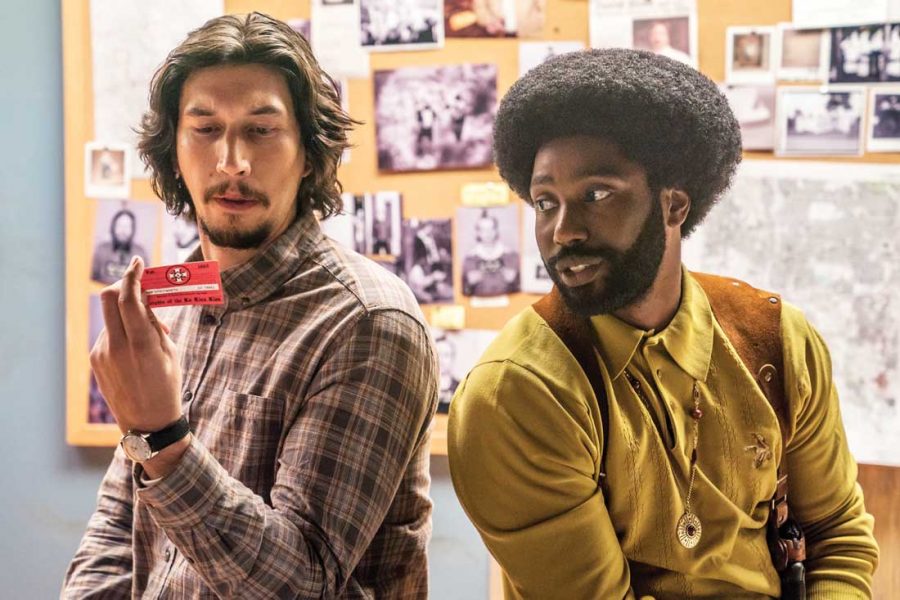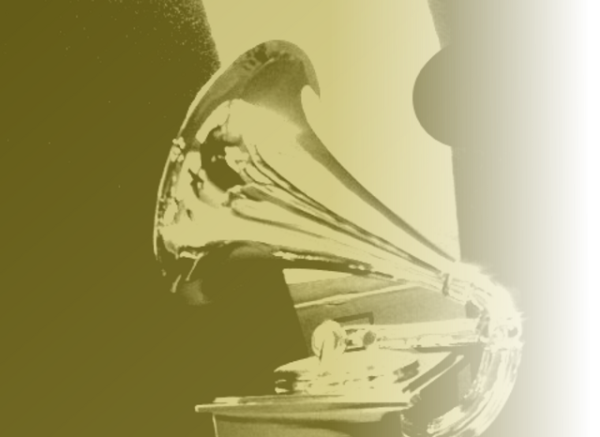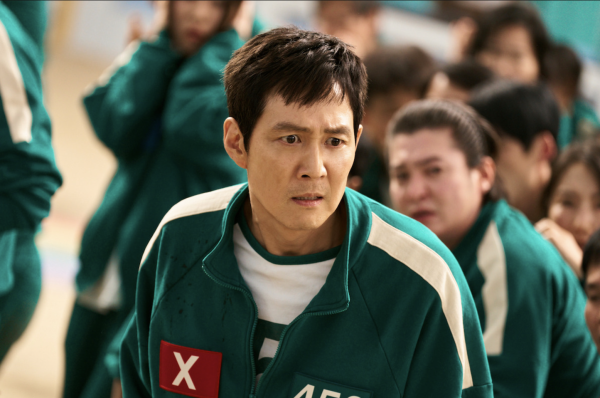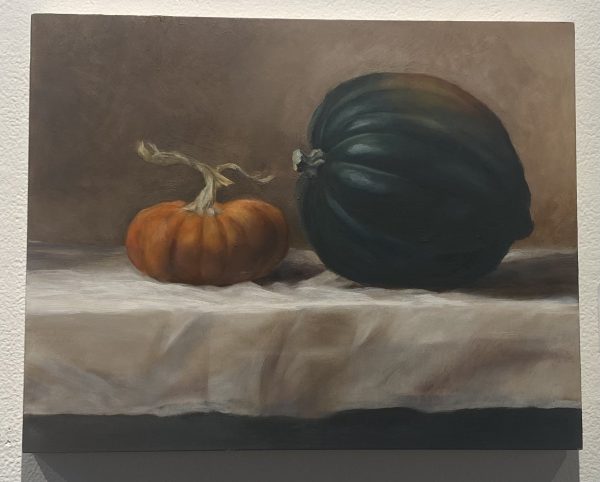Film review: ‘BlacKkKlansman’ serves as a cutting wake up call
“Dis Joint is based on some fo’ real, fo’ real sh*t.”
“BlacKkKlansman” starts with a famous wide shot from “Gone With the Wind” of wounded soldiers at the Atlanta railroad station underneath a fraying Confederate flag. Immediately, the audience is forced to confront the history and complexity of race relations in America—a perfect introduction to an astoundingly poignant cinematic take on an unbelievable true story examining every side of racism.
A Spike Lee joint from producer Jordan Peele and the team of Academy Award winning “Get Out,” “BlacKkKlansman” is the real story from the first African American detective in the Colorado Springs police department, who takes on a mission to infiltrate the local chapter of the Ku Klux Klan in the early ‘70s. Detective Ron Stallworth, played by Denzel Washington’s son John David Washington, upon finding an advertisement in the local paper for the KKK, calls the chapter leader and “whitifies” his voice to request membership. Convinced over the phone by the accent and onslaught of racial slurs, Stallworth is invited to meet the local chapter, so he recruits Jewish colleague Flip Zimmerman (Adam Driver) to act as the in-person Ron Stallworth. What follows is an undercover investigation packed with hilarious ironies and horrifying truths. The film easily makes a claim for the best film of the year.
With nothing but a preposterous prompt and a general historical context to start, the audience is held captive in suspense for two hours and sixteen minutes without a clue of what’s to come. Although extremely challenging to sit through hours of all-to-familiar hate rhetoric from white supremacists throughout the film, there is enough ironic humor and masterful storytelling to create a balanced film that causes one to laugh, cry and leave the theater speechless.
Themes from Spike Lee films like “Do the Right Thing” and “Malcolm X” are apparent throughout the film, as our main character finds himself in the middle of the extreme right of the KKK to whom he speaks “white” and the extreme left of his love interest and president of the Black Student Union at Colorado College, Patrice Dumas (Laura Harrier).
This exploration of race continues, as militant KKK members plan cross burnings and attacks, while the chapter head and Grand Wizard David Duke looks to reduce the cultish, violent nature of the organization and make racial hatred a political mainstream. Even Zimmerman, when Stallworth presents him with his new KKK membership card, discusses how he never used to think of his Jewish heritage, and how now he had to come to terms with his status as a hated minority.
More of Lee’s tropes arise in the juxtaposition between tense scenes where the KKK members nearly uncover Stallworth’s mission to lighthearted moments highlighting black music, art and culture. Terence Blanchard provides an eclectic score that serves as an excellent ode to fun of the ‘70s to break up the truth of the racial tension at the time.
The frequent contrast between crusades for black and white power with every degree of zealot and bystander displayed allows for the film to reach across boundaries just as the main character does. It is clear throughout the film and particularly at the end that “BlacKkKlansman” is not meant for a white or black audience, but an American audience.
At one point in the middle of the film, Stallworth tells a fellow officer about how he managed to establish contact with David Duke over the phone as a part of his mission. The officer responds by discussing Duke’s plans to normalize racism as national director of the KKK and become a respectable politician, perhaps seeking the presidential seat. Stallworth declares, “America would never elect somebody like David Duke president of the United States.” The officer tells him to wake up, asking how he could be so naive even as a black man.
If this reference to engage modern audiences wasn’t enough, the irony continues with “America first” chants from David Duke at the Colorado Springs KKK initiation meeting. Not to mention the clips at the end of the film from the August 2017 Charlottesville Unite the Right rally for white supremacists, anti-Semites and neo-fascists, as well as a clip from David Duke endorsing President Trump’s policies and ideals. Although these are well-known images and truths of modern American racism, you would be hard put to find someone staring at the screen without an expression of shock and disgust when the lights went up.
One of the film’s only flaws is that the characters, though well defined, do remain rather stagnant from the start to the end of the film. Zimmerman and Stallworth and the rest of the investigation team at the Colorado Springs police department learn a great deal about the racial climate of the country in which they live, but their dynamics and goals remain unchanged come the credits. Additionally, the sharp cuts from a nerve-racking scene undercover to ‘70s jiving is sometimes effective in building juxtaposition in the film, but was rather jarring at others.
“BlacKkKlansman” is a powerful telling of the outrageous story of a true American hero. Ron Stallworth may have only shut down one small chapter of a national organization, but the mighty purpose of his mission comes alive as Lee challenges the audience’s upchuck reflex by confronting the ugly reality of racism now and then. Politically charged and philosophically and morally biting, yet full of humor and some fine tunes, “BlacKkKlansman” is a must-see for everyone who calls America home.
Violet Massie-Vereker is a senior at Pelham Memorial High School. Her experience in journalism includes writing for the News of Pelham for the past two...












